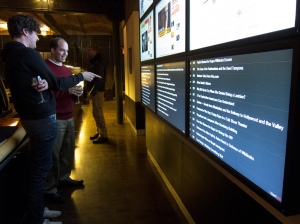The future of print journalism is no longer in our hands, both figuratively and literally.
The New York Times has adapted to the changes in today’s journalism industry, and thus has survived and will continue to survive for years to come. The Times has gone from the paper, to online, to Twitter and on along with any other innovations.
Since going online the Times has recently developed an online pay model.
Although most news is moving to an online format, the value of true journalism is still at an all time high.
The Times and ProPublica (an independent, non-profit newsroom that produces investigative journalism in the public interest) work together to find and report the news; unlike aggregates such as gawker and Newser which only post stories the Times or other major news outlets break.
With staff cuts coming in network news and White House coverage the industry is growing smaller still, so it pays to know your stuff and have reliable sources. Such as David Carr (@Carr2n) and Brian Stelter (@brianstelter) of the New York Times.
Carr and Stelter work as social media experts for the Times. They are a part of the wave of online journalists, as the Times continues to adapt.
The editorial model is one thing that has not yet changed at the New York Times. The Times has its most senior editors sit down together in a room and decide what stories go where, what gets cut etc.
Younger companies such as Gawker have created a big screen (board) in comparison that shows what stories have the most clicks and what’s most popular at the moment.
The Times has been carefully toeing the line between old school journalism and new age electronic journalism.
With the invention of the iPad in 2010 many believed that newspapers had been saved. The iPad provided an electronic, hand-held device that you could read the newspaper on. An experience very similar to that of an actual newspaper.
Will this be the savior for the newspaper industry? Probably not, but it is definitely one of the pieces to a seemingly never ending puzzle.


